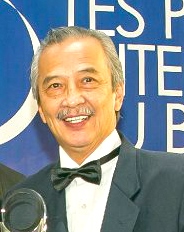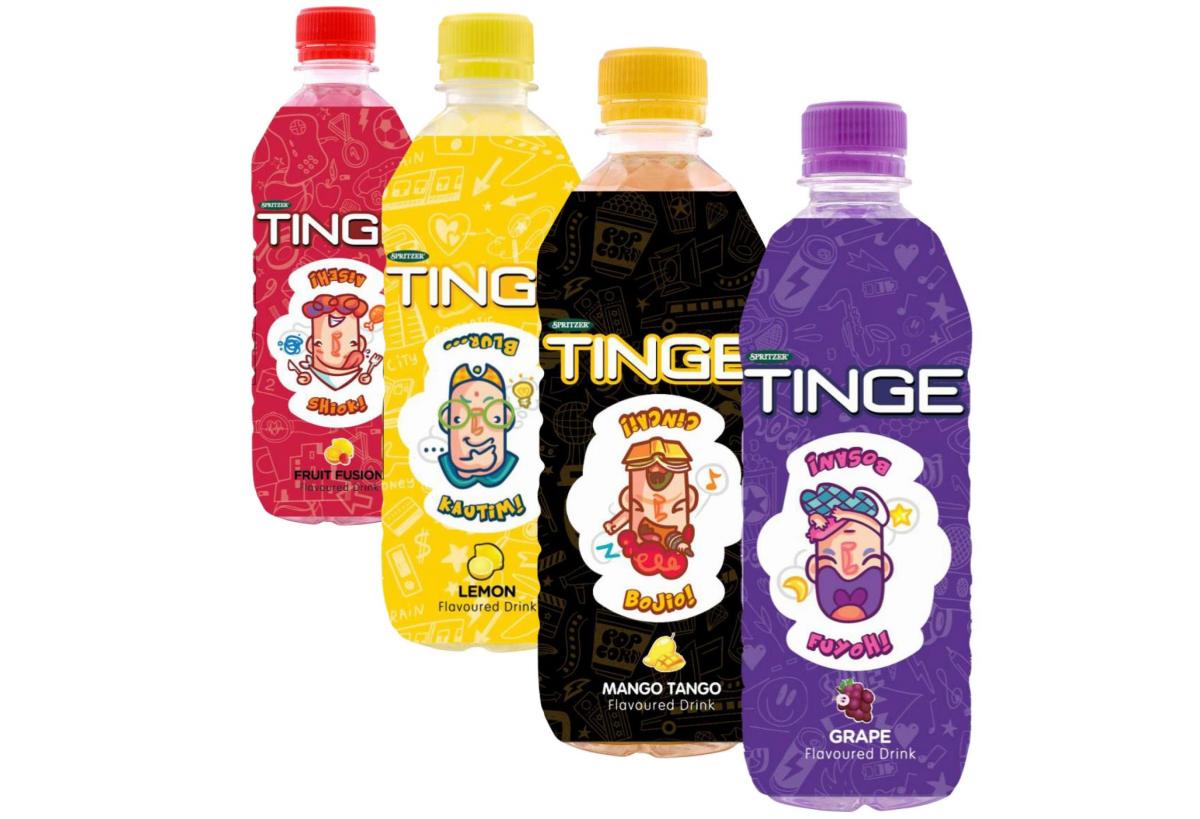MALAYSIA’s only listed water bottler and the biggest in terms of volume, Spritzer is poised to continue growing its revenue, which has been averaging about 14 percent since 2011. The company has nearly doubled its revenues to US$59 million from US$34 million in the past five years. For 2016, it aims to grow its flavored water in China, while pursuing its commitments to sustainable business practice.
The Spritzer Tinge flavored water is a non-carbonated, natural fruit-flavored drink, available in Grape, Lemon, Fruit Fusion and the newly launched Mango Tango. But there’s more to it than just natural fruit flavor.
“We produce Spritzer Tinge using the natural mineral water obtained from our 330-acres tropical rainforest in Taiping, Perak,” says Dr Chuah Chaw Teo, executive director, Spritzer Bhd. “Water is sourced from 420 feet underground in an environmentally-friendly manufacturing facility away from potential water and air pollution.”

Dr Chuah Chaw Teo, executive director, Spritzer Bhd.
A qualified chemist, Dr. Chuah underscored that among Spritzer’s competitive advantage is a naturally recurring substance called orthosilicic acid (OSA – Si(OH)4) present in the mineral water they draw from their facilities.
“A study by Professor Christopher Exley of UK’s Keele University discovered that what we extract from our factory is silicon-rich natural mineral water at 44mg/L. Silicon can help remove aluminum from our body, which can cause neurological disorders such as Alzheimer’s disease. High dietary silicon also increases bone mineral density and prevents buildup of plaques in the heart.”
According to Dr Chuah, to protect the unspoiled condition of its location, the company holds ongoing tree-planting activities and has planted approximately 15,000 trees in the factory’s vicinity.
The company is witnessing an upswing in demand for its Spritzer Tinge flavored water since its launch in 2007. With interest in physical wellness growing among consumers, this product can potentially knock off unhealthy beverages from the shelves.
“Consumers today have greater awareness about better lifestyle choices not only in terms of available food but also in beverages. That is why they are constantly on the lookout for healthy drinks. Not all people like to drink plain mineral water, though. With Spritzer Tinge, they get the benefits of hydration while satisfying their taste buds without any carbonation or color,” says Dr Chuah.

Adding to the brand’s success is its strong distribution channels through which a tight wholesaler’s network have resulted to a wider consumer reach.
Currently, this made-in-Malaysia brand is exported to Singapore and China. “Plans are afoot in growing our presence in China,” adds Dr Chuah. “We are currently available in Guangzhou, and there’s still much room for growth there and we hope to start expansion by 2016. Once we’ve reached our full potential in that southern city, we will expand to other major cities in the mainland.”
Lightweight packaging
Just like the other products, Spritzer Tinge is a result of the company’s continued innovation in packaging, manufacturing processes and supply chain. One such strategy involves packaging reduction and light-weighting. By cutting down the weight of packaging through their innovative design and new packaging solutions, the company effectively brings down the consumption of plastic raw materials, as well as the energy cost required to produce such packaging.
“Spritzer bottles are designed to be easily collapsible for disposal. This saves up to at least 65 percent of recycling space,” Dr Chua says. “Aside from using plastic polyethylene terephthalate (PET) materials, which is 100 percent recyclable as packaging, Spritzer is also investing in advanced technology machinery and programs in manufacturing to increase productivity, reduce energy consumption, PET material consumption and production waste.”
Supply chain innovations
The company is optimizing its transportation and logistics by engaging in efficient and effective delivery and distribution systems to minimize fuel consumption and explore the use of alternative fuel, reducing carbon dioxide (CO2) emissions in the process.
“We are also heavily promoting recycling among consumers. We have initiated projects that include organizing green campaigns to raise public awareness on environmental issues and the importance of recycling,” Dr Chua says.
Supporting government’s MYCarbon
Spritzer is engaged in a Renewable Energy Program that uses solar energy to generate electricity. The 25-year-old company recognizes the important role it can play in supporting the Malaysian government’s effort in moving the country towards a low-carbon economy. It supports the government’s emission reduction program by voluntarily participating in MYCarbon, the National Corporate Greenhouse Gas (GHG) Reporting Program, which is implemented by Malaysia’s Ministry of Natural Resources and Environment and supported by the United Nations Development Program Malaysia.
“We have set CO2 reduction targets and implemented strategies towards achieving the goals in our water processing plant in Taiping. Data on carbon emission is compiled and reviewed on a regular basis and submitted to MYCarbon based on their timeline,” Dr Chuah adds.
Spritzer has set a reduction target of 20 percent of kg CO2 emission per liter of product output by year 2018. To do so, it aims to run an effective machinery maintenance program to ensure efficient running of machinery and hence reduction of energy consumption; identify and continuously monitor machine efficiency including phasing out low-energy-efficient machinery; and conduct periodic assessment and review of CO2 emission by technical personnel to ensure problems are identified and corrective actions taken, on a timely basis.
Consumer education
In the case of Spritzer Tinge, one of the hurdles it faces is the product’s physical appearance – how to differentiate it from a mineral water or drinking water given its colorless form and transparent bottle.
“Our flavored water has no coloring and comes in clear bottles so consumers get the wrong impression that they are just either mineral water or drinking water,” explains Dr Chuah. “To overcome this, we have launched brand activation programs designed to enhance interaction with our target consumers. Aside from that, we are vigorously engaging them in various social media platforms such as Facebook, Twitter, Instagram and YouTube. Through these aggressive marketing efforts, they get to know what we are and what we have.” - Jonel Guittap
Nike














